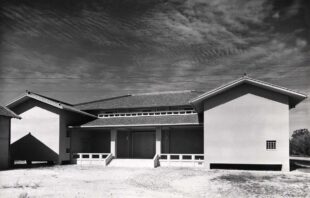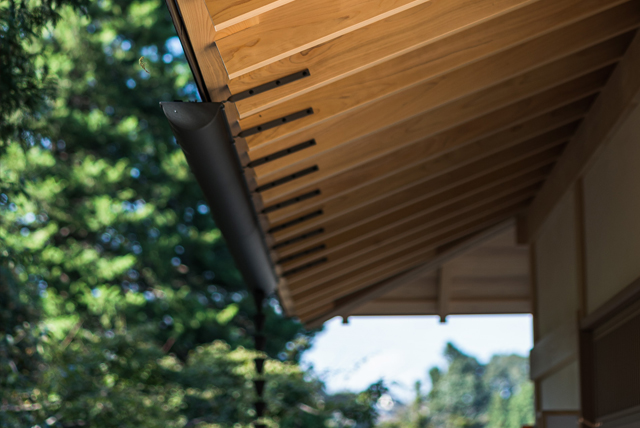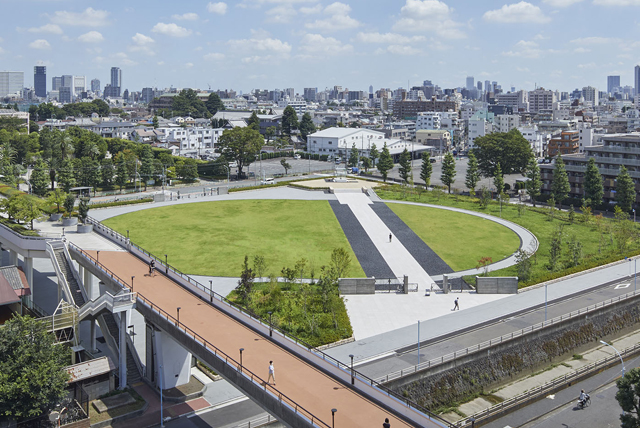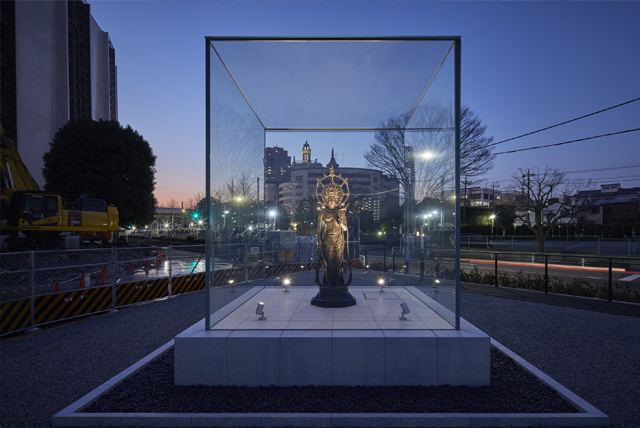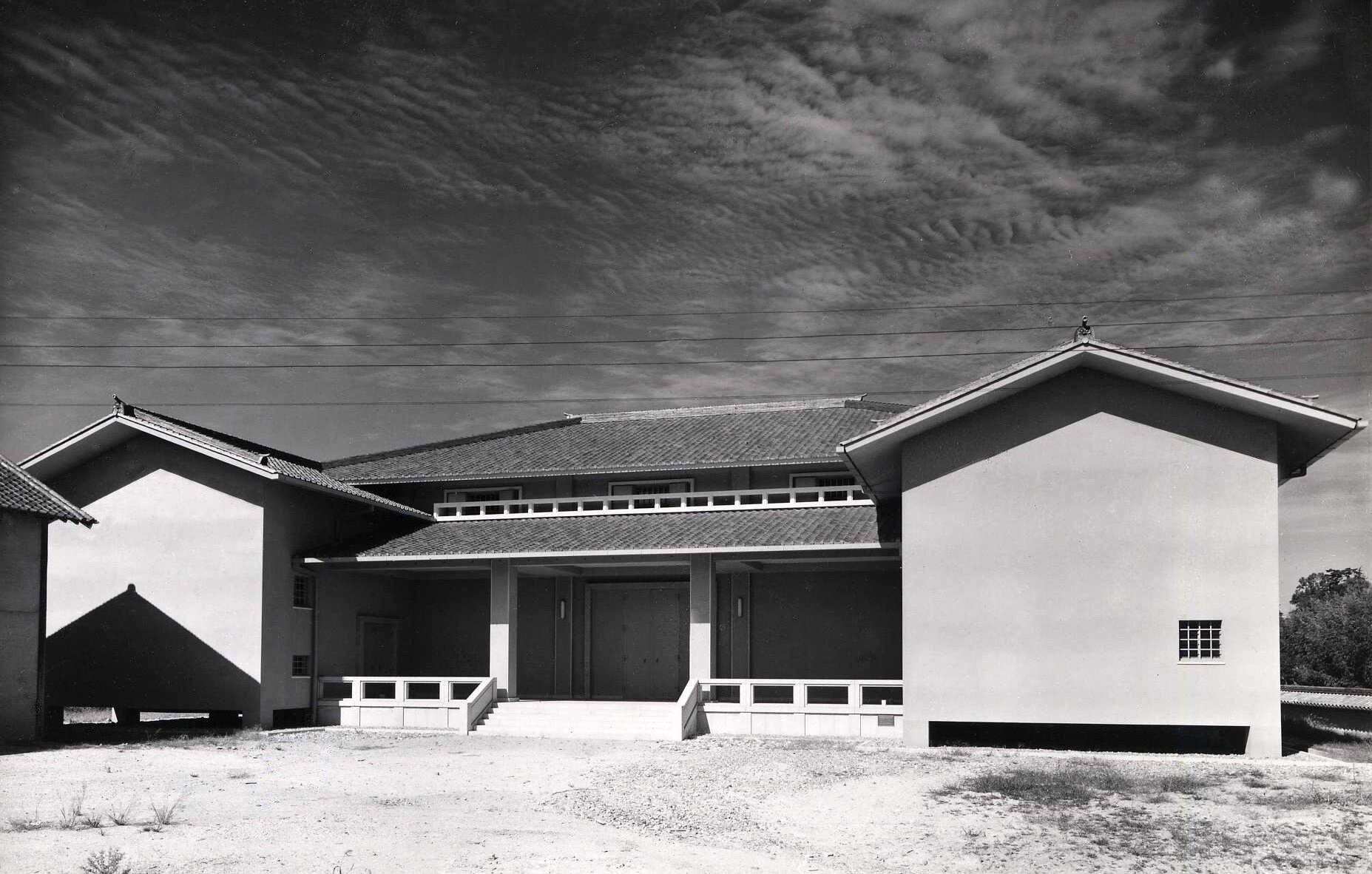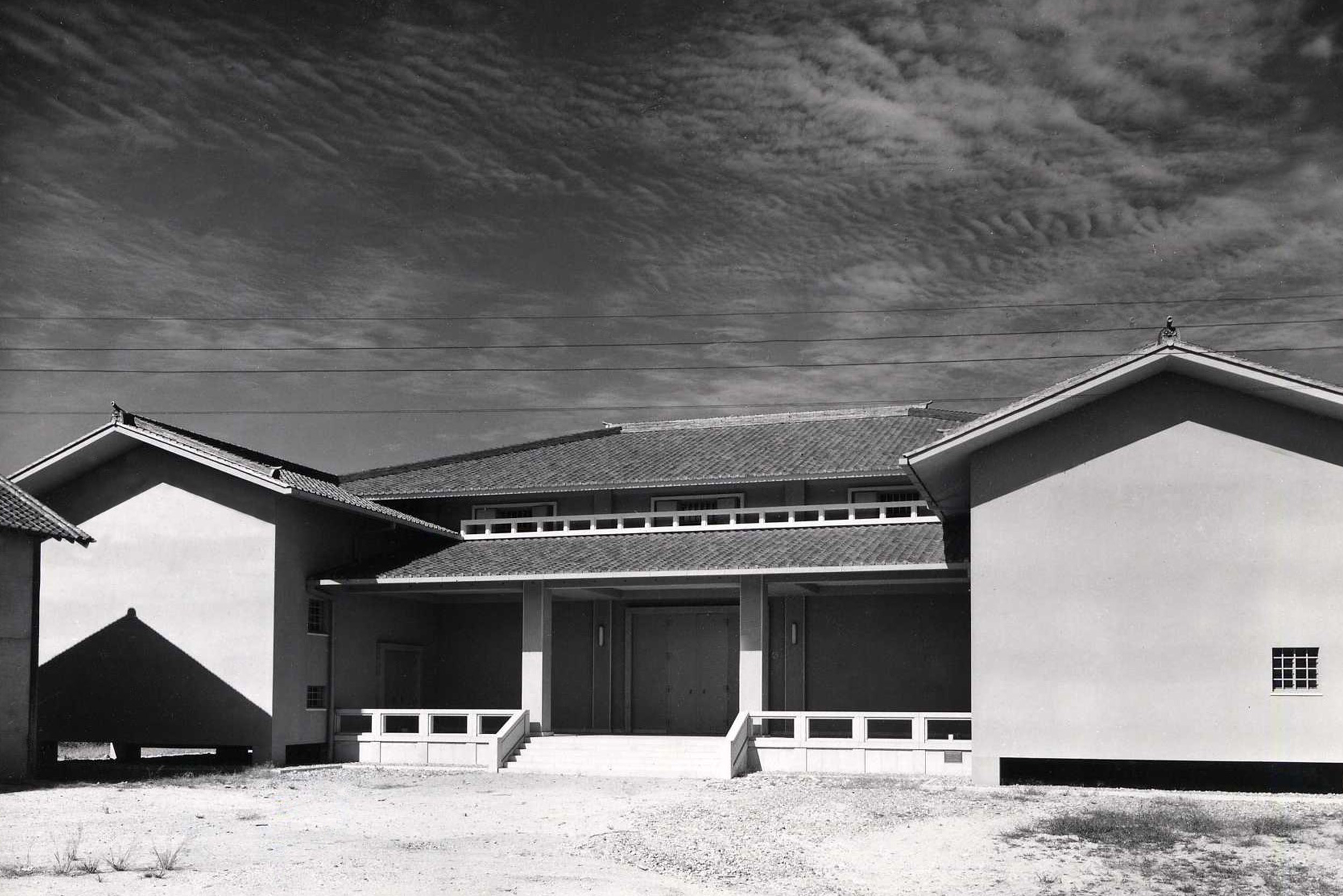
Cultural Storage in Horyuji Temple
Storage for Cultural Property Murals
In January 1949 (Showa 24), the Golden Hall of Horyuji Temple, which was undergoing disassembly and repair, was struck by a fire, and the murals were burned and damaged. Taking this fire as an opportunity, the Law for the Protection of Cultural Properties was enacted, and it was decided to construct a storage warehouse for the preservation of the murals. It was decided to preserve the murals together with the remaining framework of the inner sanctuary. The building was structured with a framework and mural storage room in the center, and two-story member and material storage rooms on both sides. A terrace corridor was set up in the central storage room, and a pilotis space where people can visit was provided at the entrance, also considering the future public display. The exterior was designed in a unified manner with a simple gable roof that evokes the image of a warehouse and an exterior wall resembling an earthen wall with few openings. In addition, the interior was equipped with a ventilation and air-conditioning device (drencher) and a carbon dioxide fire extinguishing device, which were still rare at that time. In 1958 (Showa 33), the murals of the Kondo of Horyuji Temple stored in this building were designated as Important Cultural Properties. In 2015 (Heisei 27), the Preservation and Utilization Committee of the Murals of the Kondou of Horyuji Temple was established, and research and discussions aimed at achieving one of the last wishes of the former chief priest, Onaga Genmei, of Horyuji Temple, which is "the public display of the murals at the site", have begun.
- Completion
- 1952
- Location
- Ikaruga, Nara
- Fl Area
- 1,535㎡
- Use
- Cultural Heritage・Storage
- Story
- 2F
- Structure
- SRC

